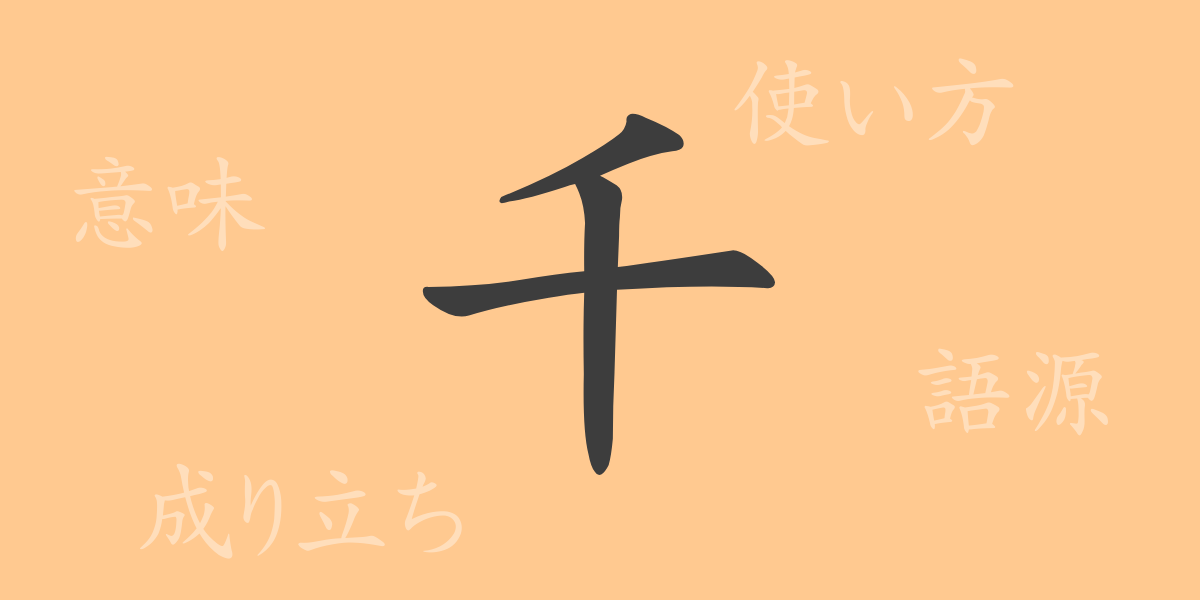The richness of Japanese written language is often expressed through kanji, which efficiently convey a wealth of information and emotion. One such kanji, “千” (せん/ち), frequently encountered in daily life, represents the fundamental numeral in Japanese. This article will delve into the origins, meanings, applications, and pronunciations of “千”, exploring its integral role in both idioms and everyday usage.
Origins of 千 (せん/ち)
The kanji “千” originated in ancient China, evolving from a pictograph representing a long pole. This image, depicting a bent pole, symbolized a multitude—ten times ten or a thousand. Over time, the character became more stylized, settling into the modern form of “千”, signifying large numbers and magnitudes in numerous contexts.
Meaning and Usage of 千
“千” straightforwardly represents the number 1,000 and is commonly used as a unit in counting money, distance, and other quantities. It also appears in idiomatic expressions such as “千差万別” (せんさばんべつ, meaning ‘vastly varied’) and “千載一遇” (せんざいいちぐう, meaning ‘once in a thousand years’), illustrating its figurative use to denote immense diversity or rarity.
Pronunciation, Stroke Count, and Radical of 千
Despite its simplicity, “千” carries extensive implications in Japanese.
- Pronunciation: On’yomi as “せん”, Kun’yomi as “ち”
- Stroke Count: 3 strokes
- Radical: 十部 (じゅうぶ), related to the numeral ten
Phrases and Idioms Involving 千
The kanji “千” features in numerous phrases and idioms, enriching its linguistic landscape:
- 千差万別 (せんさばんべつ): Describing a vast array of differences and varieties.
- 千載一遇 (せんざいいちぐう): A once-in-a-millennium chance, emphasizing the rarity of an opportunity.
- 千秋楽 (せんしゅうらく): The final performance of a play or concert series.
- 一期一会 (いちごいちえ): A once-in-a-lifetime encounter, stressing the uniqueness of each moment.
- 千客万来 (せんきゃくばんらい): A stream of endless visitors, symbolizing great popularity or success.
Conclusion on 千
The kanji “千”, with its clear depiction and cultural depth, is an indispensable element of the Japanese language. It not only serves as a numerical signifier but also enriches the language through its use in various idioms and expressions. Understanding the potential of a single kanji like “千” enhances comprehension and fosters more effective communication.

























